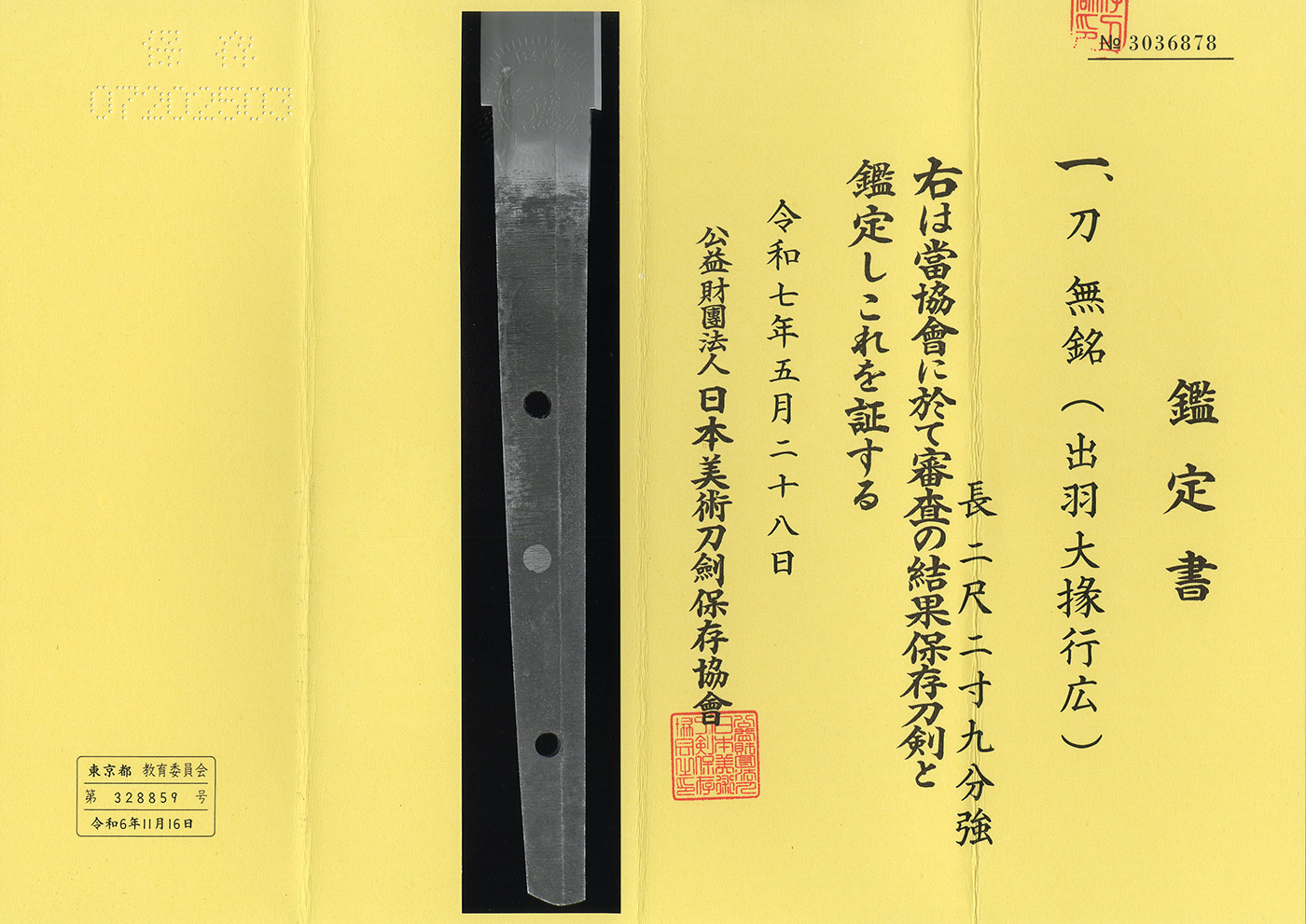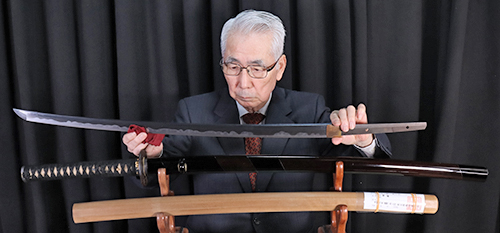Description
Katana in Shirasaya with Koshirae (NBTHK Hozon Token)
Signature: Mumei (Attributed to Dewa Daijo Yukihiro)
無銘(出羽大椽行広)
Shinto: Jyo Saku: Hizen
We divide 4 sections for each sword as Saijyo Saku, Jyojyo Saku, Jyo Saku and Regular Saku.
This piece is ranked as Jyojyo Saku (superior grade) among works by Dewa Daijo Yukihiro.
Habaki: Single-layered, made of plain copper
Blade Length: 69.6 cm (27.40 in)
Curvature: 1.3 cm (0.51 in)
Mekugi Hole: 3 (1 plugged)
Width at Base (Motohaba): 2.92 cm (1.15 in)
Width at Tip (Sakihaba): 2.01 cm (0.79 in)
Thickness of Rim (Kasane): 0.66 cm (0.26 in)
Sword Weight: 755 g
Era: Edo period, around the Kanbun era (circa 1661–1673)
Shape: A blade with wide mihaba and solid kasane, featuring an extended kissaki.
Jigane: Ko-itame hada, well-forged and beautiful. Known as Konuka-hada or Hizen-hada.
Hamon: Made in nie-deki, featuring deep nioiguchi with a flamboyant o-gunome midare.
It resembles cumulonimbus clouds floating in a blue sky, with thick ashi, sunagashi, and kinsuji activities.
A spectacular hamon.
Boshi: Rounded with a deep nioiguchi that turns back gracefully.
Features: Dewa Daijo Yukihiro was the younger brother of the first-generation Masahiro and was known as Kurobei.
In Keian 3 (1650), he studied the use of Dutch steel at the age of 32.
He received the title Dewa Daijo in Shoho 5 (1648), and passed away in Tenwa 3 (1683).
His style closely resembles that of Masahiro, and although this work is a superb example of his craftsmanship, it is deeply regrettable that the nakago has been shortened and the signature lost.
Koshirae:
Tsuba: Iron tsuba with high-relief carvings of figures—one on a boat by a lakeshore and another on a dragon-shaped vessel—decorated with gold. A distant mountain scene is engraved in the background.
Fuchikashira: Shakudo nanako ground with raised floral designs, likely peonies, decorated in gold.
Saya (Scabbard): Black lacquer with carved patterns.
Menuki: Plant motifs carved and highlighted with gold.
Aoi Art’s Comment: Although unsigned, this work has been attributed to Dewa Daijo Yukihiro and is of the highest quality.
It is very unfortunate that it was shortened and rendered mumei.
Had it retained its signature, it may have been designated as Juyo Token.
Historical Background: The Edo period was an era of peace.
The focus of sword-making shifted from cutting performance to visual appreciation.
More flamboyant and decorative styles emerged, such as blades with horimono (carvings) and wild tōranba hamon.
NBTHK Hozon Token
Aoi Art estimation paper
Whole Oshigata









 日本語
日本語






